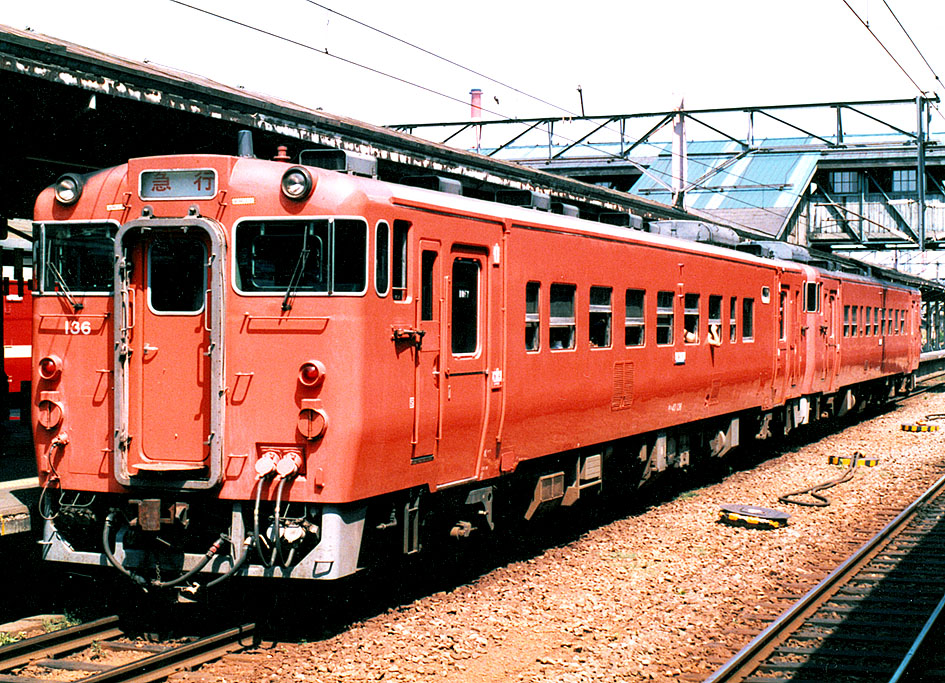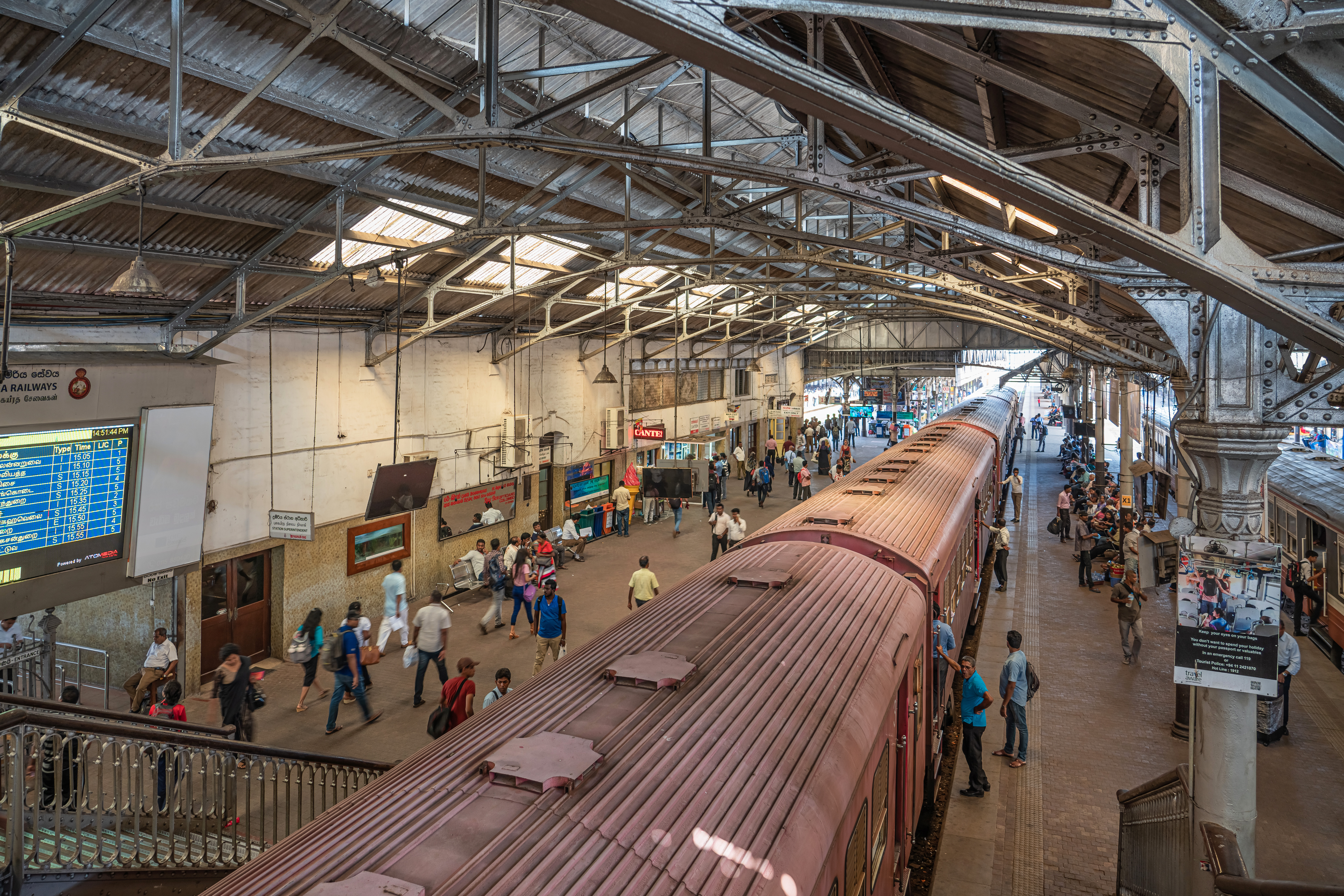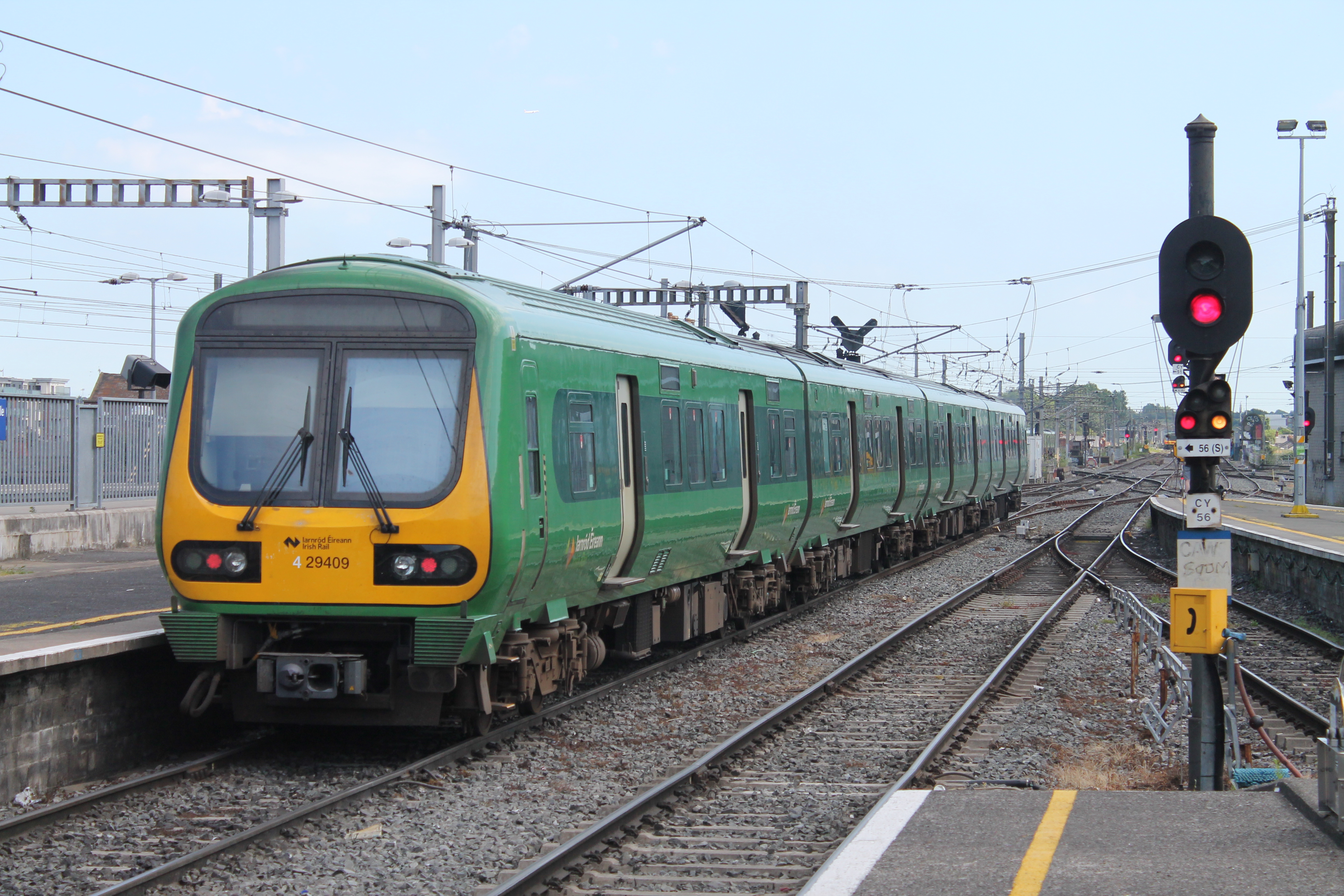|
CGR Class S1
Ceylon Government Railway S1 was a class of Diesel multiple unit train sets built by English Electric for the Ceylon Government Railway. Description These units arrived Ceylon (now Sri Lanka) in 1938. Only three units were ever built, and they were given the names ''Silver Foam'' (501), ''Silver Spray'' (502) and ''Silver Mist'' (503). Their inaugural run from Colombo Fort Station to Galle took place on 25 February 1938. These train sets were used only on the Coastal Line. They served the Ceylon Government Railway for around 19 years before being withdrawn and scrapped in 1955. Later that year, two diesel locomotives classified as the Class M3 Nos. 589 and 590 were built locally using the prime movers of the scrapped S1 sets. See also *Sri Lanka Railways *Sri Lanka Railways M3 Sri Lanka Railways M3 was a class of diesel-electric locomotives introduced in 1955 by the Ceylon Government Railway (now Sri Lanka Railways) to be used on the Ceylon national rail network. Hist ... [...More Info...] [...Related Items...] OR: [Wikipedia] [Google] [Baidu] |
Diesel Multiple Unit
A diesel multiple unit or DMU is a multiple-unit train powered by on-board diesel engines. A DMU requires no separate locomotive, as the engines are incorporated into one or more of the carriages. Diesel-powered single-unit railcars are also generally classed as DMUs. Diesel-powered units may be further classified by their transmission type: diesel–mechanical DMMU, diesel–hydraulic DHMU, or diesel–electric DEMU. Design The diesel engine may be located above the frame in an engine bay or under the floor. Driving controls can be at both ends, on one end, or in a separate car. Types by transmission DMUs are usually classified by the method of transmitting motive power to their wheels. Diesel–mechanical In a diesel–mechanical multiple unit (DMMU), the rotating energy of the engine is transmitted via a Transmission (mechanics), gearbox and driveshaft directly to the wheels of the train, like a automobile, car. The transmissions can be shifted manually by the driver, a ... [...More Info...] [...Related Items...] OR: [Wikipedia] [Google] [Baidu] |
Ceylon
Sri Lanka, officially the Democratic Socialist Republic of Sri Lanka, also known historically as Ceylon, is an island country in South Asia. It lies in the Indian Ocean, southwest of the Bay of Bengal, separated from the Indian subcontinent, Indian peninsula by the Gulf of Mannar and the Palk Strait. It shares a maritime border with the Maldives in the southwest and India in the northwest. Sri Jayawardenepura Kotte is the legislative capital of Sri Lanka, while the largest city, Colombo, is the administrative and judicial capital which is the nation's political, financial and cultural centre. Kandy is the second-largest urban area and also the capital of the last native kingdom of Sri Lanka. The most spoken language Sinhala language, Sinhala, is spoken by the majority of the population (approximately 17 million). Tamil language, Tamil is also spoken by approximately five million people, making it the second most-spoken language in Sri Lanka. Sri Lanka has a population of appr ... [...More Info...] [...Related Items...] OR: [Wikipedia] [Google] [Baidu] |
Prime Mover (locomotive)
In engineering, a prime mover is an engine that converts chemical energy of a fuel into useful work. In a locomotive, the prime mover is thus the source of power for its propulsion. In an engine-generator set, the engine is the prime mover, as distinct from the generator. Definition In a diesel-mechanical locomotive, the prime mover is the diesel engine that is mechanically coupled to the driving wheels (drivers). In a diesel-hydraulic locomotive, the prime mover is the diesel engine that powers the pumps of one or more torque converters mechanically coupled to the drivers. In a diesel-electric locomotive, the prime mover is the diesel engine that rotates the main generator responsible for producing electricity to power the traction motors that are geared to the drivers. The prime mover can also be a gas turbine instead of a diesel engine. In either case, the generator, traction motors and interconnecting apparatus are considered to be the power transmission system and not p ... [...More Info...] [...Related Items...] OR: [Wikipedia] [Google] [Baidu] |
Sri Lanka Railways M3
Sri Lanka Railways M3 was a class of diesel-electric locomotives introduced in 1955 by the Ceylon Government Railway (now Sri Lanka Railways) to be used on the Ceylon national rail network. History In 1955, the state owned Ceylon Government Railway manufactured Sri Lanka's "first" diesel-electric locomotive A locomotive is a rail transport, rail vehicle that provides the motive power for a train. Traditionally, locomotives pulled trains from the front. However, Push–pull train, push–pull operation has become common, and in the pursuit for ... using old spares from the withdrawn and scrapped Class S1 DMU power sets. This locomotive was named "Jayanthi" and classified as the Class M3 No. 589. The locomotive was put to service on 5 September 1956. Two years later in 1958, the railway manufactured another locomotive and classified it as the Class M3 No. 590. The reconditioned Jayanthi was built at the Ratmalana Railway Workshop under the guidance of Chief Engineer ... [...More Info...] [...Related Items...] OR: [Wikipedia] [Google] [Baidu] |
Scrap
Scrap consists of recyclable materials, usually metals, left over from product manufacturing and consumption, such as parts of vehicles, building supplies, and surplus materials. Unlike waste, scrap can have monetary value, especially recovered metals, and non-metallic materials are also recovered for recycling. Once collected, the materials are sorted into types – typically metal scrap will be crushed, shredded, and sorted using mechanical processes. Metal recycling, especially of structural steel, ships, used manufactured goods, such as vehicles and white goods, is an industrial activity with complex networks of wrecking yards, sorting facilities, and recycling plants. The industry includes both formal organizations and a wide range of informal roles such as waste pickers who help sorting through scrap. Processing Scrap metal originates both in business and residential environments. Typically a "scrapper" will advertise their services to conveniently remove scrap metal ... [...More Info...] [...Related Items...] OR: [Wikipedia] [Google] [Baidu] |
Galle
Galle (, ; , ) (formerly ) is a major city on the southwestern tip of Sri Lanka, south of Colombo. Galle is the provincial capital and largest city of Southern Province, Sri Lanka and is the capital of Galle District. Galle was known as ''Gimhathiththa'' before the arrival of the Portuguese in the 16th century, when it was the main port on the island. Ibn Batuta, a Moroccan Berber Muslim traveller in the 14th century, referred to it as ''Qali''. Galle reached the height of its development in the 18th century, during the Dutch colonial period. Galle is the best example of a fortified city built by the Portuguese in South and Southeast Asia, showing the interaction between Portuguese architectural styles and native traditions. The city was extensively fortified by the Dutch during the 17th century from 1649 onwards. The Galle fort is a World Heritage Site and is the largest remaining fortress in Asia built by European occupiers. Other prominent landmarks in Galle inclu ... [...More Info...] [...Related Items...] OR: [Wikipedia] [Google] [Baidu] |
Colombo Fort Station
Fort railway station is a major rail hub in Colombo, Sri Lanka. The station is served by Sri Lanka Railways, with many inter-city and commuter trains entering each day. Fort Station is the main rail gateway to central Colombo; it is the terminus of most intercity trains in the country. History When the railways first opened in Ceylon (Sri Lanka) in 1864, trains terminated at Colombo Terminus Station, a now-retired station near Maradana. The earliest station to be called ''Fort'' was a small station, built in 1877 when the Coast Line was built. This original station sat on the site of present-day Secretariat Halt just west of today's Fort Station. The present Fort Station was opened in 1917, as a new central station for Colombo. This has been constructed similar to Manchester Victoria station. The station was built on land reclaimed from the Beira Lake. This project was part of a scheme started in 1906 to reorganize the railway within Colombo, where Colombo Terminus Statio ... [...More Info...] [...Related Items...] OR: [Wikipedia] [Google] [Baidu] |
Sri Lanka
Sri Lanka, officially the Democratic Socialist Republic of Sri Lanka, also known historically as Ceylon, is an island country in South Asia. It lies in the Indian Ocean, southwest of the Bay of Bengal, separated from the Indian subcontinent, Indian peninsula by the Gulf of Mannar and the Palk Strait. It shares a maritime border with the Maldives in the southwest and India in the northwest. Sri Jayawardenepura Kotte is the legislative capital of Sri Lanka, while the largest city, Colombo, is the administrative and judicial capital which is the nation's political, financial and cultural centre. Kandy is the second-largest urban area and also the capital of the last native kingdom of Sri Lanka. The most spoken language Sinhala language, Sinhala, is spoken by the majority of the population (approximately 17 million). Tamil language, Tamil is also spoken by approximately five million people, making it the second most-spoken language in Sri Lanka. Sri Lanka has a population of appr ... [...More Info...] [...Related Items...] OR: [Wikipedia] [Google] [Baidu] |
Ceylon Government Railway
The Sri Lanka Railway Department (more commonly known as Sri Lanka Railways (SLR)) ( Sinhala: ශ්රී ලංකා දුම්රිය සේවය ''Śrī Laṃkā Dumriya Sēvaya''; Tamil: இலங்கை புகையிரத சேவை ''Ilankai Pugaiyiradha Sēvai'') is Sri Lanka's railway owner and primary operator. As part of the Sri Lankan government, it is overseen by the Ministry of Transport. Founded in 1858 as the Ceylon Government Railway, it operates the nation's railways and links Colombo (the capital) with other population centres and tourist destinations. The Sri Lankan rail network is of broad gauge. Some of its routes are scenic, with the main line passing (or crossing) waterfalls, mountains, tea estates, pine forests, bridges and peak stations. History The construction of a railway in Ceylon was first raised in 1842 by European coffee planters seeking a line be constructed between Kandy and Colombo as a quicker more efficient means ... [...More Info...] [...Related Items...] OR: [Wikipedia] [Google] [Baidu] |
English Electric
The English Electric Company Limited (EE) was a British industrial manufacturer formed after World War I by amalgamating five businesses which, during the war, made munitions, armaments and aeroplanes. It initially specialised in industrial electric motors and transformers, locomotives and railway electric traction, traction equipment, diesel engine, diesel motors and steam turbines. Its products were later expanded to include consumer electronics, nuclear reactors, guided missiles, military aircraft and mainframe computers. Two English Electric aircraft designs became landmarks in British aeronautical engineering; the English Electric Canberra, Canberra and the English Electric Lightning, Lightning. In 1960, English Electric Aircraft (40%) merged with Vickers Armstrongs, Vickers (40%) and Bristol Aeroplane Company, Bristol (20%) to form British Aircraft Corporation. In 1968 English Electric's operations were merged with General Electric Company#Further expansion (1961–83), ... [...More Info...] [...Related Items...] OR: [Wikipedia] [Google] [Baidu] |
Diesel Multiple Unit
A diesel multiple unit or DMU is a multiple-unit train powered by on-board diesel engines. A DMU requires no separate locomotive, as the engines are incorporated into one or more of the carriages. Diesel-powered single-unit railcars are also generally classed as DMUs. Diesel-powered units may be further classified by their transmission type: diesel–mechanical DMMU, diesel–hydraulic DHMU, or diesel–electric DEMU. Design The diesel engine may be located above the frame in an engine bay or under the floor. Driving controls can be at both ends, on one end, or in a separate car. Types by transmission DMUs are usually classified by the method of transmitting motive power to their wheels. Diesel–mechanical In a diesel–mechanical multiple unit (DMMU), the rotating energy of the engine is transmitted via a Transmission (mechanics), gearbox and driveshaft directly to the wheels of the train, like a automobile, car. The transmissions can be shifted manually by the driver, a ... [...More Info...] [...Related Items...] OR: [Wikipedia] [Google] [Baidu] |
Vacuum Brake
The vacuum brake is a brake, braking system employed on trains and introduced in the mid-1860s. A variant, the automatic vacuum brake system, became almost universal in British train equipment and in countries influenced by British practice. Vacuum brakes also enjoyed a brief period of adoption in the United States, primarily on narrow-gauge railroads. Their limitations caused them to be progressively superseded by Railway air brake, compressed air systems starting in the United Kingdom from the 1970s onward. The vacuum brake system is now obsolete; it is not in large-scale usage anywhere in the world, other than in South Africa, largely supplanted by railway air brake, air brakes. Introduction In the earliest days of railways, trains were slowed or stopped by the application of manually applied brakes on the locomotive and in brake vehicles through the train, and later by steam power brakes on locomotives. This was clearly unsatisfactory, given the slow and unreliable response ... [...More Info...] [...Related Items...] OR: [Wikipedia] [Google] [Baidu] |








